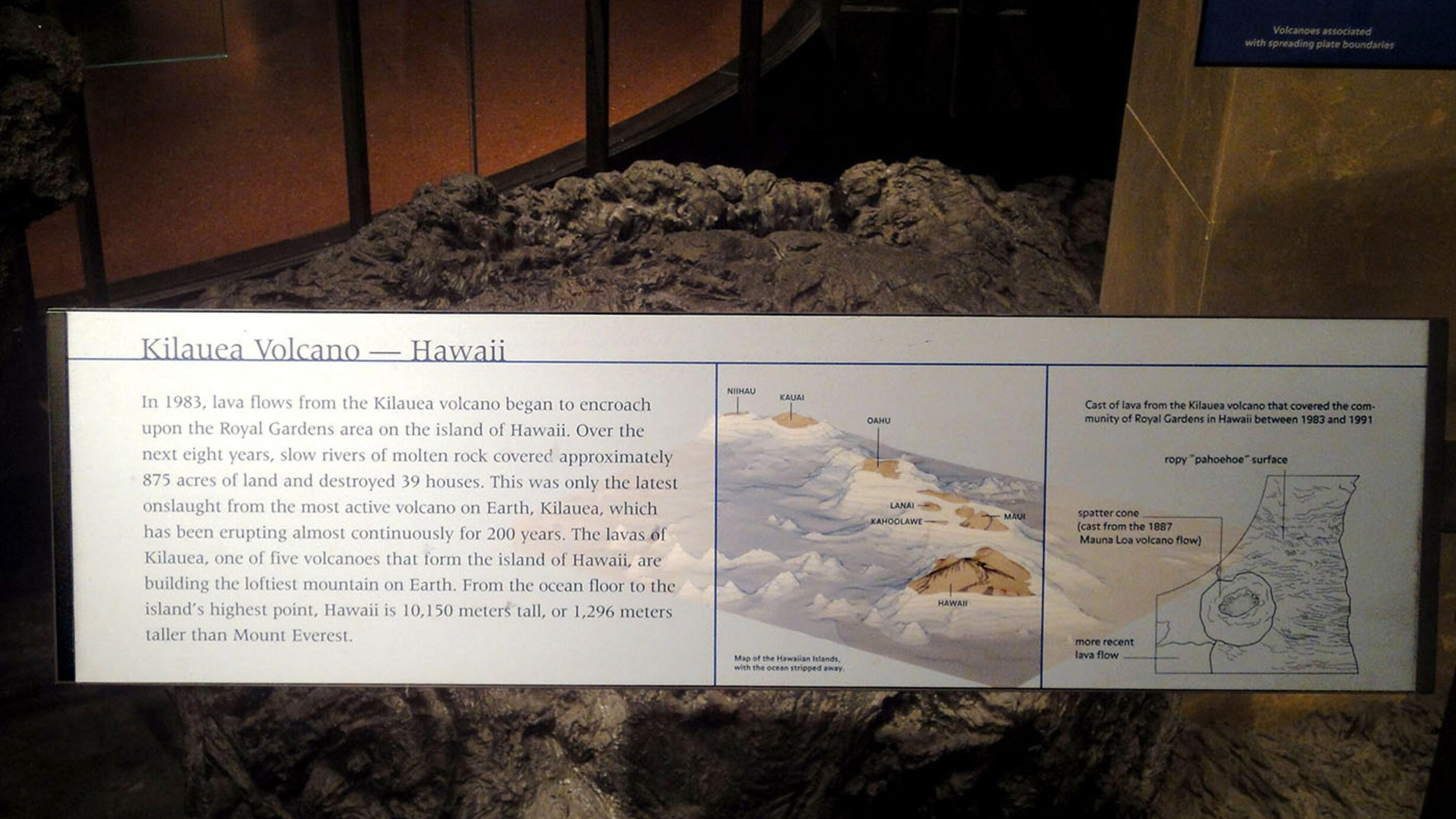Kilauea volcano Hawaii
Part of Hall of Planet Earth.
Part of Hall of Planet Earth.

In 1983, lava flows from the Kilauea volcano began to encroach upon the Royal Gardens area on the island of Hawaii. Over the next eight years, slow rivers of molten rock covered approximately 875 acres of land and destroyed 39 houses. This was only the latest onslaught from the most active volcano on Earth, Kilkauea, which has been erupting almost continuously for 200 years. The lavas of Kilauea, one of five volcanoes that form the island of Hawaii, are building the loftiest mountain on Earth. From the ocean floor to the island’s highest point, Hawaii is 10,150 meters tall, or 1,296 meters taller than Mount Everest.
Scientists at Work: Hawaii
Kilauea is the most active volcano on Earth, which has been erupting almost continuously for 200 years. The lavas of Kilauea, one of five volcanoes that form the island of Hawaii, are building the loftiest mountain on Earth.
In this video, Dr. Rosamond Kinzler from the American Museum of Natural History explores lava flows on Kilauea with scientists from the Hawaii Volcano Observatory, Dr. James Kauahikhaua and Dr. Christina Heliker.
This video was produced in 1999 for the David S. and Ruth L. Gottesman Hall of Planet Earth at the American Museum of Natural History.
Video credits:
American Museum of Natural History, Rosamond Kinzler
Ballentyne Brumble Communications
Ka 'Io Productions, Inc.